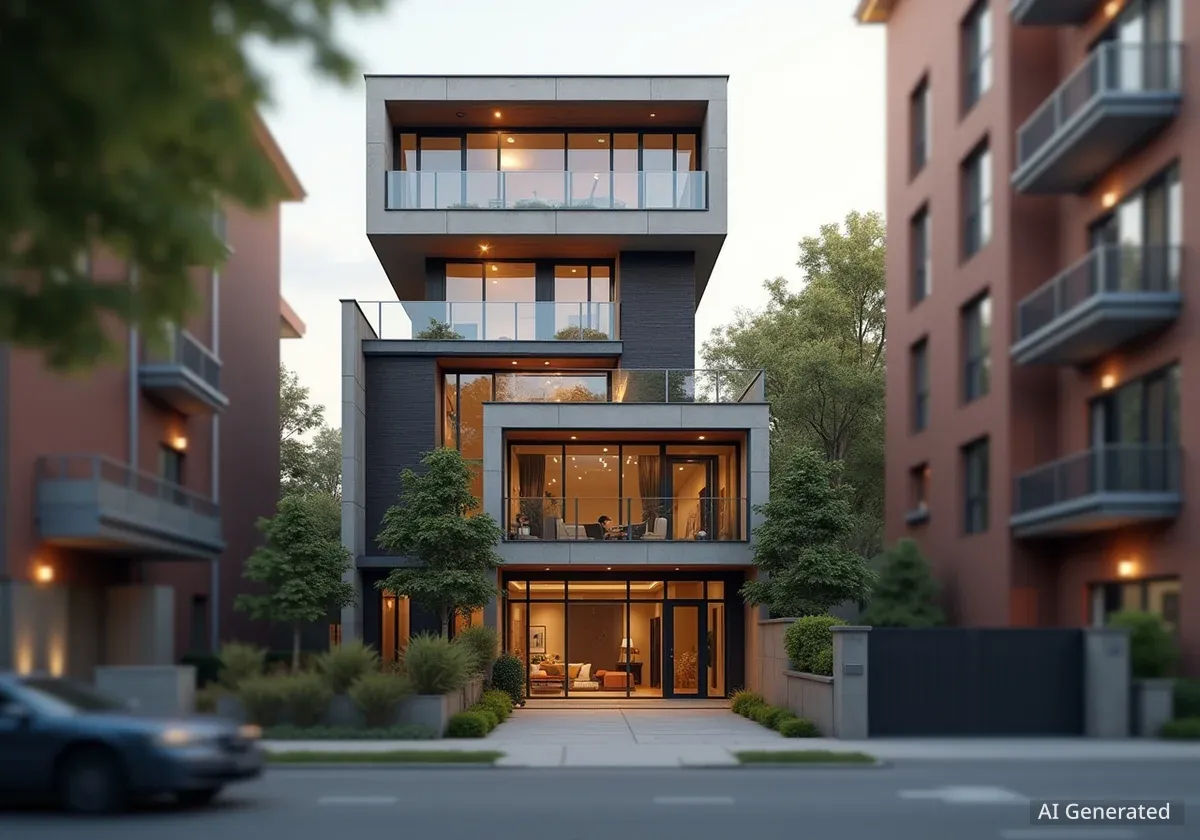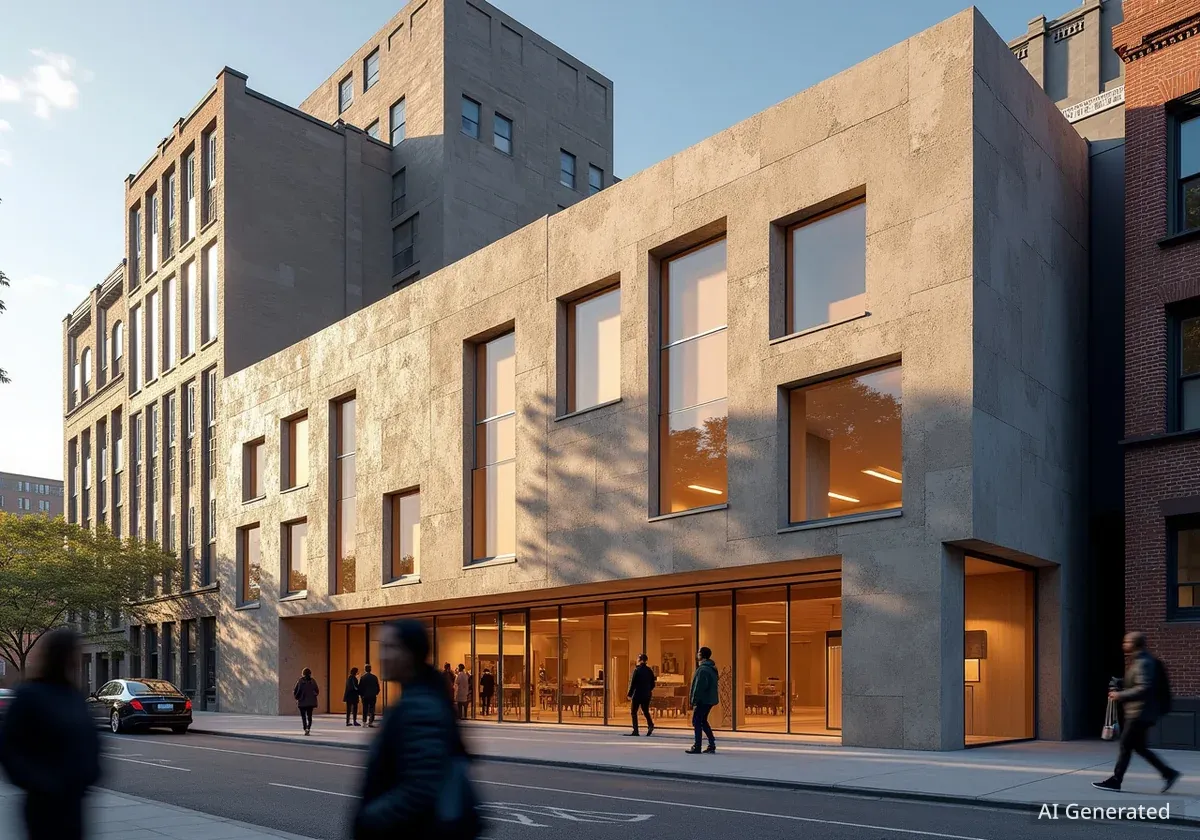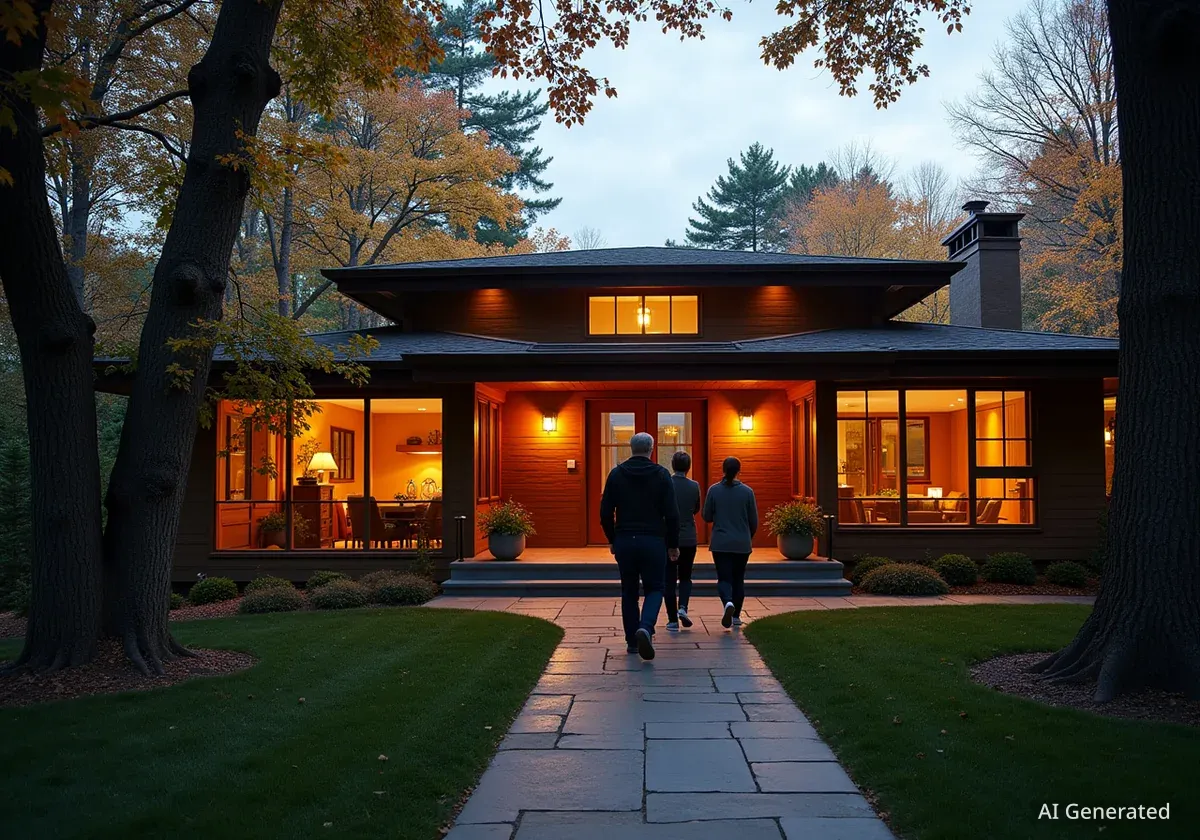Urban planners and architects are increasingly focusing on infill development to maximize existing city plots. A recent collection highlights eight residential projects across the globe that demonstrate creative solutions for building on tight, vacant urban land. These homes, located from Dublin to Buenos Aires, illustrate how challenging sites can become unique living spaces, often blending with or subtly contrasting their surroundings.
Key Takeaways
- Infill housing optimizes unused urban plots.
- Architects use innovative designs for light and privacy.
- Projects span diverse cities like London, Ghent, and Monterrey.
- Designs often blend with or thoughtfully contrast existing streetscapes.
Spruce House, London: Blending with Timber
Local architecture firm Ao-ft designed Spruce House in London to integrate seamlessly with its terraced street. The design carefully matches the height and alignment of the adjacent buildings. However, the facade introduces a distinctive element: it is entirely covered with vertical timber battens and mullions. This creates a visually engaging texture.
The studio drew inspiration from the area's historical identity as a village high street. The ground floor features a glazed shop-front style, screened by wooden slats. This approach allows for natural light while maintaining a degree of privacy from the street.
Project Fact
Spruce House's timber facade pays homage to London's historical high street architecture, providing both aesthetic appeal and practical screening.
Glass Brick House, Ghent: Maximizing Natural Light
In Ghent, Belgium, Delmulle Delmulle Architecten faced the challenge of a site surrounded by buildings on three sides. This limited opportunities for traditional windows. To address this, the Belgian studio used glass brickwork for the upper part of the street-facing facade. This choice allows ample natural light to penetrate the interior spaces.
The layout of Glass Brick House is unconventional. Bedrooms are located on the ground floor, behind a terracotta-tiled facade. The primary living, kitchen, and dining areas are positioned on the floor above, benefiting from the light-diffusing glass bricks.
"The use of glass brickwork was a direct response to the site's constraints, allowing us to bring essential natural light deep into the home without compromising privacy," said a spokesperson for Delmulle Delmulle Architecten.
Curtain House, Wisconsin: A Modern Contrast
Johnsen Schmaling Architects created Curtain House in Wisconsin, deliberately moving away from the pitched rooflines common in the neighborhood. Instead, the American studio opted for a distinct rectangular form. The front of the house features wood and metal louvers, providing a modern aesthetic.
The architects aimed to redefine infill housing conventions with this contemporary addition. Despite its modern design, the house was built to the same height as its century-old neighbors. This ensures it respects the existing street scale while offering a fresh visual perspective.
Infill Housing Explained
Infill housing refers to the process of developing vacant or underutilized land within existing urban areas. It helps to increase population density, reduce urban sprawl, and make efficient use of infrastructure. These projects often face challenges due to limited space, irregular plot shapes, and the need to integrate with established neighborhoods.
Dublin House: Industrial Aesthetics and Privacy
Gró Works, an Irish architecture studio, designed an infill house in Dublin using red brick and perforated metal panels. This combination creates an industrial feel. The design references both the ornate Victorian red-brick terraces nearby and the more utilitarian backstreet the home overlooks.
A door within the metal cladding opens to a sheltered porch. This design choice creates a buffer zone between the street and the home's entrance, enhancing privacy. Similar to Glass Brick House, the bedrooms are on the ground floor, while the open-plan living area on the upper floor extends onto a balcony.
Casa Ederlezi, Monterrey: Private Urban Oasis
In Monterrey, Mexico, Práctica Arquitectura designed Casa Ederlezi on a narrow five-meter-wide infill plot. The home consists of two distinct red concrete volumes, separated by a central courtyard. This layout prioritizes privacy, largely closing off the house from its surroundings.
Despite the closed exterior, the internal outdoor spaces, such as the central courtyard, create a sense of openness within the perimeter walls. This design strategy allows residents to enjoy outdoor living in a secure and secluded environment within a dense urban setting.
NW10 House, London: Responding to Irregular Plots
Platform 5 Architects tackled a challenging triangular corner site in London, formerly a builder's yard, to create NW10 House. The home features an irregular, blocky form that directly responds to the plot's unique planning constraints and the sight lines of surrounding properties. This demonstrates a highly adaptive architectural approach.
The three-story home's rooms fan out from a central, skylit spiral staircase. The interiors prominently feature exposed concrete, giving the house a robust and contemporary feel. This project illustrates how complex urban plots can inspire distinct and functional architectural forms.
- Plot Shape: Triangular corner site.
- Key Feature: Central skylit spiral stair.
- Material: Exposed concrete interiors.
TH House, Hanoi: Light in Narrow Spaces
ODDO Architects designed TH House, a five-story home on an extremely narrow four-by-six-meter infill site in Hanoi, Vietnam. The property is flanked by buildings on three sides, with only a 1.2-meter-wide alley separating it from the opposite property. Maximizing light was a primary concern for the Vietnamese studio.
To address this, the architects incorporated several strategies: lightwells, perforated walls, and a glazed facade that extends slightly forward of the interior spaces. These elements work together to draw natural light deep into the narrow home, creating brighter and more open living environments despite the tight confines.
Design Challenge
The TH House in Hanoi exemplifies how architects use vertical space and light management to create livable homes on plots as small as 24 square meters.
Casa Vedia, Buenos Aires: Optimizing Internal Quality
In Buenos Aires, BHY Arquitectos focused on optimizing the quality of internal spaces for Casa Vedia. Sandwiched between two party walls, the local studio integrated two courtyards and two patios into the design. These outdoor spaces enhance ventilation and bring natural light into the all-white, three-story house.
The home features a double-sloped roof. This design choice helps to diminish the perceived scale of the house, allowing it to better fit within the residential neighborhood. The combination of internal courtyards and a thoughtful roofline creates a harmonious balance between privacy, light, and integration with the urban context.
These eight projects highlight a global trend in urban architecture. Architects are finding creative ways to use limited city space. They balance modern design with neighborhood context. This leads to unique and functional homes that improve urban density and character.




